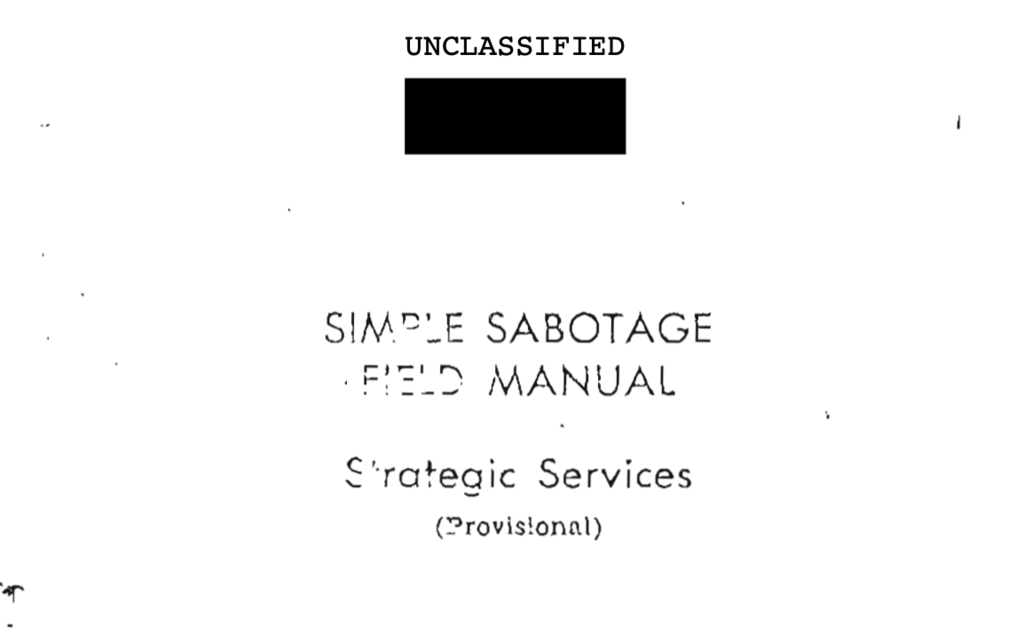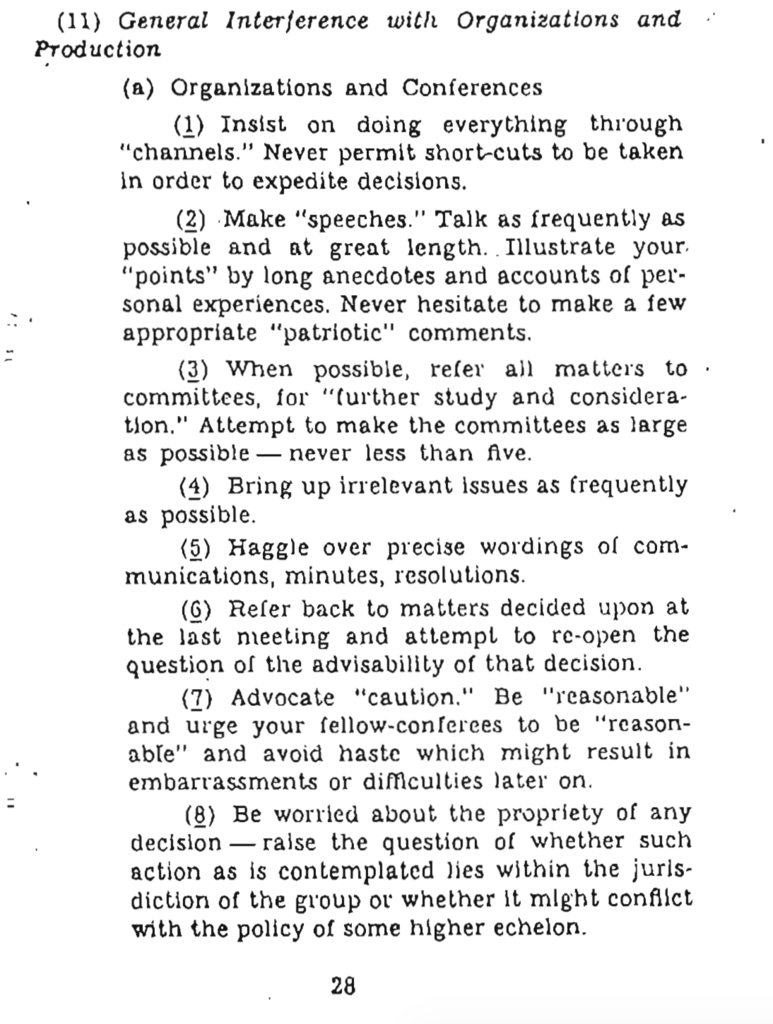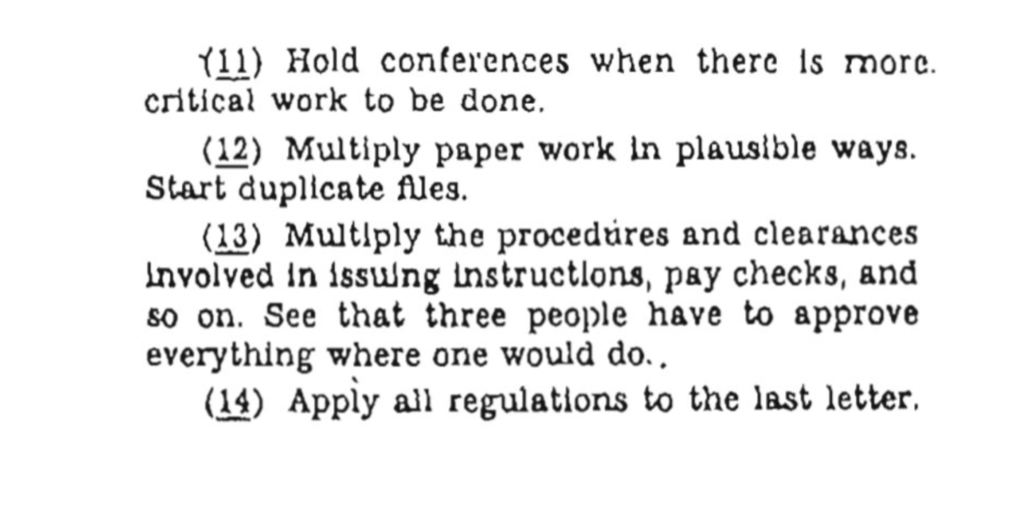Who doesn’t know that? Everyday office life, a series of never-ending meetings that should have become an e‑mail. Or to say it with Rainer Maria Rilke: His gaze against the sweeping of the slides has grown so weary, it can hold no more. To him, there seem to be a thousand meetings, and behind those thousand meetings, there is no world. That’s the way it is, and it’s the way it is everywhere. But perhaps there is an entirely different explanation for this everyday sabotage of productivity from the last years of World War II. But beware: some of the answers are likely to unsettle the population.

In the Simple Sabotage Field Manual, the Office of Strategic Services, the predecessor organization of the CIA, describes the art of simple sabotage. The handbook was published in 1944 when the Allies slowly gained predominance in World War II but still struggled with massive resistance. It aimed at collaborators and supporters in the ranks of the Axis powers, to whom it offered practices and tactics to systematically undermine productivity and morale to weaken the system from within.
This manual was classified as confidential for a long time before the CIA published it as a historical document in 2008. Besides instructions for elaborate pranks and some solid crimes, it also contains astonishingly timeless “tips” for undermining morale and productivity in organizations. And already 1944, one essential element of this simple sabotage were useless and excessive meetings.

Even today, more than 70 years later, there is little to add to this. Unfortunately. For managers, the handbook also provides a few unique “best practices” to weaken productivity in the long term by keeping the organization occupied with itself:

Courageously Assume Responsibility!
As plausible as this conspiracy theory may sound, I always stick to Hanlon’s Razor instead: “Never attribute to malice that which is adequately explained by stupidity or incompetence.” We are, therefore, not the victims of foreign powers and their deliberate acts of sabotage. Often, we sabotage ourselves because we do not know it differently or can do better. Or because we have not thought about it yet and instead do it as we have always done. But we can work on this if we all actively take responsibility for our time and productivity. And then it takes courage to break the patterns and do it without asking permission because: Doing is like wanting, just more badass!






2 Comments
great read and thought provoking
Thanks a lot, Sarah!